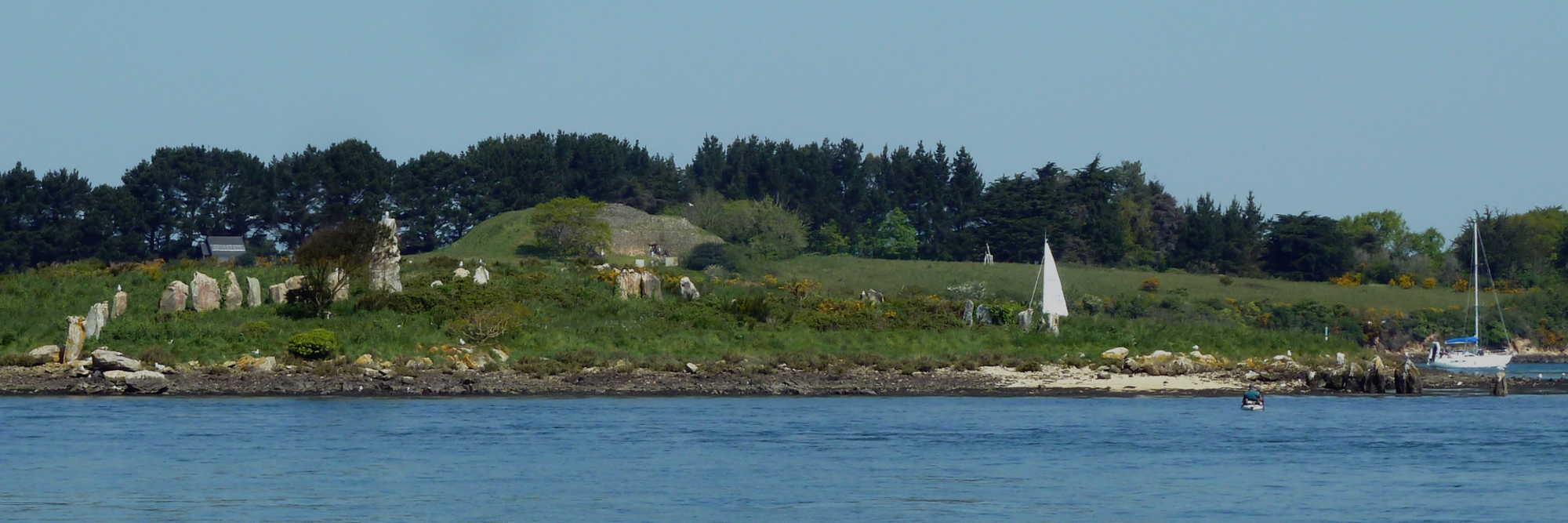- Home
- Megalithism in Morbihan
- Gavrinis
- History
Gavrinis cairn overlooking the treacherous La Jument tidal reach and its sinister whirlpools.
One literal translation of Gavrinis in modern Breton could be goat island; in fact, the name stems from an old Celtic root, Govero, meaning "embanked torrent, ravine, hidden swirl" (hence the French word "gouffre"). Gavrinis island in fact overlooks the Vannes river channel, where it flows through the Morbihan Gulf, exactly where the tidal flow is at its most treacherous.
This isolated, sinister spot is also a good place for meditation. So it is no surprise that a small community of monks chose to settle there as early as the Middle Ages, probably watching over the Gulf entrance while praising God. The last remains of the chapel were demolished at the beginning of the 19th century and monastic graves were excavated in 1885.
All the old plates and photographs show the barrow damaged on top. This excavation cannot be dated, but medieval pottery sherds were found. Access to the chamber was possible through a gap between two slabs at the bottom of the crater, and it is said that this uncomfortable but quiet place was used as a hideout during the French Revolution.
The story of Gavrinis really begins in 1832 when the owner of the island decided to explore the crypt. He noticed that it merged with a gallery full of loose stones and had it cleared. In 1835, Prosper Mérimée, Inspector of French Historical Monuments, visited the place and described it in his "Notes de voyage"
The site was next explored by G. de Closmadeuc from 1881 to 1886, then further basic work was carried out by Z. Le Rouzic, from 1925 to 1927. The present state of the monument is due to the excavation and restoration work undertaken by the French Ministry of Culture from 1979 to 1984, under Dr. C.-T. Le Roux and with help from the Département du Morbihan (which has owned the site since 1961).
Unlike the previous work which had not gone further than inside the chamber and the passage, the later exploration focused more particularly on the external architecture and more particularly the monument's south-eastern facade.
Three medieval graves excavated in 1885 by Dr de Closmadeuc.
Three medieval graves excavated in 1885 by Dr de Closmadeuc.



